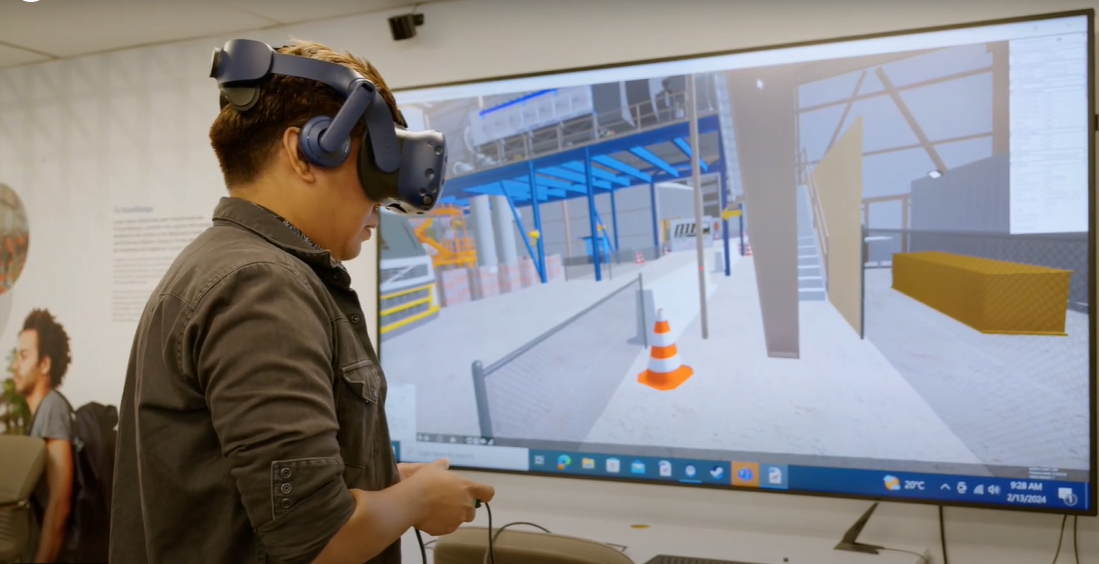City Rail Link: Virtual reality (VR) worker induction
Summary
The City Rail Link (CRL) project in New Zealand has implemented an innovative virtual reality (VR) induction process for workers, leveraging Building Information Modelling (BIM) to create immersive training environments. This approach allows workers to experience and understand potential hazards and safety protocols in a risk-free virtual setting before entering the actual construction site. The VR induction process has proven particularly effective for workers unfamiliar with tunnel environments or those who don’t have English as their first language, ensuring a comprehensive understanding of safety procedures across diverse teams.
Background
The Central Rail Link (CRL) project is the largest transport infrastructure project New Zealand has ever built. It features two 3.45-kilometre-long tunnels which have been built up to 42 metres below the Auckland city centre. The project faces challenges typical of large-scale underground construction, including complex work environments, diverse workforce, and critical safety requirements.
CRL is funded jointly by the Crown (NZ Government) and Auckland Council. Design and construction on the project has been carried out by the Link Alliance. This consists of City Rail Link Ltd (CRLL), Vinci Construction Grands Projects S.A.S, Downer NZ Ltd, Soletanche Bachy International NZ Limited, WSP New Zealand Limited, AECOM New Zealand Limited , Tonkin + Taylor Limited.
Video
Approach
The CRL project team created a virtual reality environment based on a BIM model of the project that accurately represents the actual work conditions in the underground tunnels. This VR environment is used for worker induction and training, allowing new team members to experience potential scenarios and hazards before entering the physical site.
The VR induction process covers various aspects of on-site safety, including ID tag protocols, emergency procedures, and equipment usage. For example, workers learn about the importance of tagging in and out of the tunnel for safety tracking. The VR simulation also presents emergency scenarios, such as fire situations, where workers must choose the correct actions and equipment to use. This interactive approach allows workers to make mistakes and learn from them in a safe environment.
One of the key benefits of using VR for induction is its ability to overcome language barriers. The visual nature of the training makes it accessible to workers from diverse backgrounds, ensuring that all team members, regardless of their primary language, can understand and follow safety procedures effectively.
Outcomes and benefits
Health and safety benefits
- Enhanced safety comprehension: The immersive VR experience allows workers to better understand and retain safety information compared to traditional induction methods. The visual and interactive nature of the training makes complex safety protocols more accessible and memorable.
- Risk-free experience of hazards: Workers can encounter and respond to potential hazards in a controlled, virtual environment. This exposure helps prepare workers for real-life situations without putting them at actual risk.
- Improved communication of safety procedures: The VR induction breaks down language barriers, making safety information accessible to a diverse workforce. This ensures that all workers, regardless of their language background, can understand critical safety protocols.
- Increased engagement in safety training: Workers reported enjoying the VR training experience, leading to higher engagement with safety materials. The interactive and realistic nature of the VR environment makes the training more engaging and effective than traditional methods.
Lessons learnt
Involve the experts
Safety experts and construction managers bring their knowledge of real-world hazards, safety protocols, and best practices which is essential for creating realistic and effective virtual scenarios. Safety professionals can ensure that the VR training covers all necessary aspects of site safety and accurately represents potential risks and appropriate responses.
Consider key decision points
While VR is valuable for training for extreme emergency responses (e.g. the fire and gas leak scenarios used in the CRL training), more mundane actions may have big consequences for safety. Key decision points such as tagging in and out of the job site and checking for traffic before entering the tunnel were included in the VR training so that workers would recognise their importance.
Benefits go beyond contractual obligations
Innovative approaches can help exceed standard safety practices and deliver better outcomes for the project. Even though VR training was not a contractual requirement, the improvement in worker preparedness that it brought made it worthwhile for the project team to include it in their delivery.
Adapt to diverse workforce needs
Developing training for a multi-cultural workforce is often a significant challenge, but the use of a VR approach provided a solution that communicated the necessary information clearly, regardless of each worker’s background.

